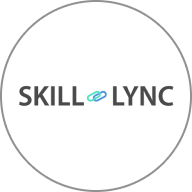Modified on
Different Car Lights and Their Purposes

Skill-Lync
Have you ever wondered how different car lights work and why they are essential for your safety on the road? From illuminating dark roads to signaling your intentions to other drivers, car lights play a crucial role in ensuring a smooth and safe driving experience. Let's dive into the fascinating world of car lights and explore their various types and purposes.
Headlights
Headlights are perhaps the most critical lights on your car. They come in two main types: high-beam and low-beam headlights. High-beam headlights provide maximum illumination, ideal for driving on dark, unlit roads. However, they can blind oncoming traffic, so it's essential to switch to low-beam headlights when another vehicle approaches. Low-beam headlights offer adequate illumination without causing glare to other drivers, making them perfect for city driving and adverse weather conditions.
Daytime Running Lights (DRLs)
Daytime running lights are designed to increase your vehicle's visibility during daylight hours. These lights automatically turn on when you start your car and remain active while the engine is running. DRLs are typically white LED strips integrated into the headlight assembly, making your car more noticeable to other road users.
Fog Lights
Fog lights are positioned lower on the front of your vehicle and are angled to illuminate the road directly in front of you. They are particularly useful in foggy or misty conditions, where regular headlights can reflect off the fog and reduce visibility. Fog lights emit a wide, flat beam of light that cuts through the fog, improving your visibility and safety.
Turn Signal Lights/Indicators
Turn signal lights, also known as indicators, are essential for communicating your intentions to other drivers. These lights are usually amber in color and blink to indicate whether you are turning left or right. Proper use of turn signals helps prevent accidents and ensures smooth traffic flow.
Tail Lights and Brake Lights
Tail lights are always on when your car is in use and provide a red light to make your vehicle visible from behind. Brake lights, on the other hand, are brighter and illuminate when you press the brake pedal. They alert drivers behind you that you are slowing down or stopping, giving them time to react accordingly.
Parking Lights
Parking lights, also known as sidelights, are used when your car is parked or when visibility is reduced, such as during heavy rain or snow. These lights are typically white or amber and help make your vehicle more visible to other drivers and pedestrians.
Hazard Warning Lights
Hazard warning lights, or emergency flashers, are used to indicate that your vehicle is stationary or moving slowly due to an emergency or breakdown. These lights flash simultaneously to warn other drivers to proceed with caution.
Interior Lights
Interior lights provide illumination inside your car, making it easier to see and navigate during nighttime or low-light conditions. These lights are typically located on the ceiling or dashboard and can be turned on manually or automatically when the doors are opened.
Conclusion
Understanding the different types of car lights and their purposes is essential for safe driving. By using the appropriate lights in various driving conditions, you can enhance your visibility, communicate your intentions to other drivers, and reduce the risk of accidents. So, the next time you get behind the wheel, take a moment to appreciate the engineering marvels that keep you safe on the road.
Skill-Lync offers a wide range of industry-relevant upskilling programs to get you career-ready. Click here to sign up for a FREE course demo right away, and let's launch your career together!
Author
Uma Maheswari K
Author

Skill-Lync
Subscribe to Our Free Newsletter

Continue Reading
Related Blogs
Explore the fundamentals of vehicle dynamics and ultimate trends in the field from design and modeling to control with Skill Lync's exclusive course on the subject. Read about how Skill-Lync's CAE courses can help you get employed.
28 Jul 2020
In this article, we will briefly discuss the working, applications, and features of the one-dimensional systematic simulation tool, GT-Power, in Emission Control Strategy, engine calibration, hybrid vehicle modeling. Read about how Skill-Lync's CAE courses can help you get employed.
28 Jul 2020
This article offers a brief introduction to the globally accepted standard of Geometric Dimensioning and Tolerancing, and its importance for the entire manufacturing process. Read about how Skill-Lync's CAE courses can help you get employed.
28 Jul 2020
In this blog we will read about Going a step into Biomechanics and how Skill-Lync's CAE course will help you get employed.
09 May 2020
The powertrain is the most prominent source of vibrations that affects the driving experience for the people on board. This blog from Skill-Lync examines these vibrations to help enhance that experience.
21 Aug 2020
Author

Skill-Lync
Subscribe to Our Free Newsletter

Continue Reading
Related Blogs
Explore the fundamentals of vehicle dynamics and ultimate trends in the field from design and modeling to control with Skill Lync's exclusive course on the subject. Read about how Skill-Lync's CAE courses can help you get employed.
28 Jul 2020
In this article, we will briefly discuss the working, applications, and features of the one-dimensional systematic simulation tool, GT-Power, in Emission Control Strategy, engine calibration, hybrid vehicle modeling. Read about how Skill-Lync's CAE courses can help you get employed.
28 Jul 2020
This article offers a brief introduction to the globally accepted standard of Geometric Dimensioning and Tolerancing, and its importance for the entire manufacturing process. Read about how Skill-Lync's CAE courses can help you get employed.
28 Jul 2020
In this blog we will read about Going a step into Biomechanics and how Skill-Lync's CAE course will help you get employed.
09 May 2020
The powertrain is the most prominent source of vibrations that affects the driving experience for the people on board. This blog from Skill-Lync examines these vibrations to help enhance that experience.
21 Aug 2020
Related Courses
